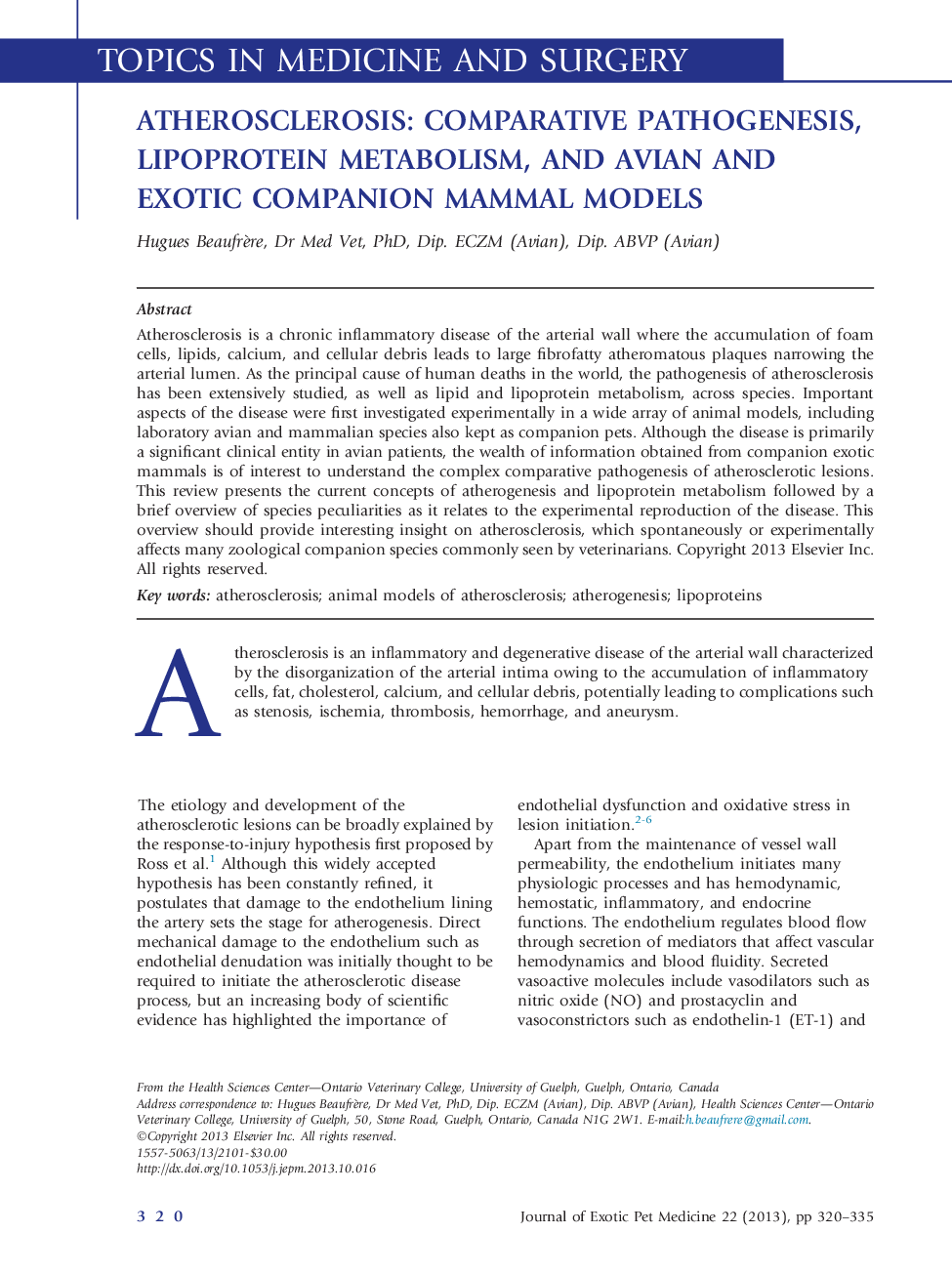| Article ID | Journal | Published Year | Pages | File Type |
|---|---|---|---|---|
| 2397095 | Journal of Exotic Pet Medicine | 2013 | 16 Pages |
Atherosclerosis is a chronic inflammatory disease of the arterial wall where the accumulation of foam cells, lipids, calcium, and cellular debris leads to large fibrofatty atheromatous plaques narrowing the arterial lumen. As the principal cause of human deaths in the world, the pathogenesis of atherosclerosis has been extensively studied, as well as lipid and lipoprotein metabolism, across species. Important aspects of the disease were first investigated experimentally in a wide array of animal models, including laboratory avian and mammalian species also kept as companion pets. Although the disease is primarily a significant clinical entity in avian patients, the wealth of information obtained from companion exotic mammals is of interest to understand the complex comparative pathogenesis of atherosclerotic lesions. This review presents the current concepts of atherogenesis and lipoprotein metabolism followed by a brief overview of species peculiarities as it relates to the experimental reproduction of the disease. This overview should provide interesting insight on atherosclerosis, which spontaneously or experimentally affects many zoological companion species commonly seen by veterinarians.
